
The Moselle is a river that rises in the Vosges mountains and flows through north-eastern France and Luxembourg to western Germany. It is a left bank tributary of the Rhine, which it joins at Koblenz. A small part of Belgium is in its basin as it includes the Sauer and the Our.
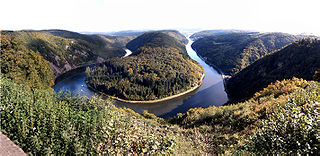
The Saar is a river in northeastern France and western Germany, and a right tributary of the Moselle. It rises in the Vosges mountains on the border of Alsace and Lorraine and flows northwards into the Moselle near Trier. It has two headstreams, that both start near Mont Donon, the highest peak of the northern Vosges. After 246 kilometres (153 mi) the Saar flows into the Moselle at Konz (Rhineland-Palatinate) between Trier and the Luxembourg border. It has a catchment area of 7,431 square kilometres (2,869 sq mi).
The Chemin de fer Arnaud, now Chemin de fer Arnaud Quebec is a private Canadian short line railway owned by Société ferroviaire et portuaire de Pointe-Noire (SFPPN) operating in the province of Quebec.

Choloy-Ménillot is a commune in the Meurthe-et-Moselle department in north-eastern France.

Audun-le-Tiche is a commune in the Moselle department in Grand Est in northeastern France.

Réchicourt-le-Château is a commune in the Moselle department in Grand Est in north-eastern France. It is part of the arrondissement of Sarrebourg-Château-Salins.

Niderviller is a commune in the Moselle department in Grand Est in north-eastern France. It is mostly known for the Niderviller pottery, established in 1735 and still producing there.
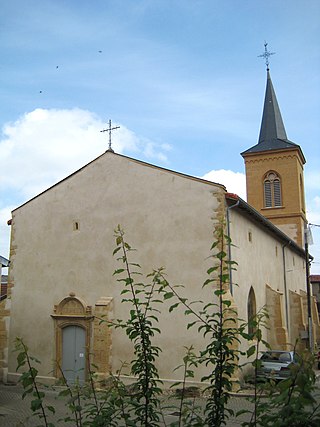
Pierrevillers is a commune in the Moselle department in Grand Est in north-eastern France. It is part of the urban area of Metz.
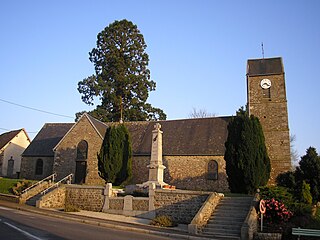
Saint-Clair-de-Halouze is a commune in the Orne department in north-western France. It is situated midway between Domfront and Flers. It was originally a centre for ferrous mining and the little community, the minehead and the railway line, now a path, remain. The small river Halouze flows through the village on its way to join the Varenne.
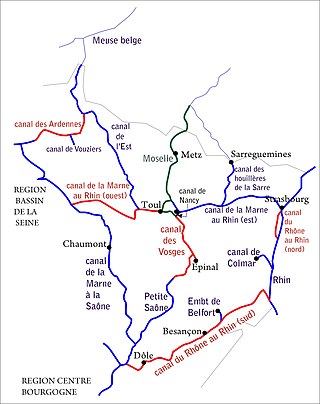
The Canal de la Meuse is the current name of what used to be the northern branch of the Canal de l'Est. It is a canal in northeastern France, predominantly made up of the canalised river Meuse. The Canal de l'Est was built from 1874 to 1887 to provide a waterway inside the new border with Prussia after the Franco-Prussian War, Overall, the canal had a total length of 394 kilometres (245 mi). In 2003, the northern and southern branches were officially renamed Canal de la Meuse and Canal des Vosges respectively.

The Canal de la Sarre, originally called Canal des Houillères de la Sarre, connects the Canal de la Marne au Rhin in Gondrexange to the canalised river Sarre in Sarreguemines in northeastern France. For convenience this entry covers the entire waterway in France, including the canalised river. The canal is 63 km long, and the French portion of the canalised river Sarre is 12 km long, making a total of 75 km, with respectively 28 and 2 locks.

The Compagnie anonyme de Châtillon et Commentry was a French steelmaking company, formed as a limited company in 1862 from the Société Bouguéret, Martenot et Cie., a creation from the combination of several French iron makers in 1846.
The French National Railways used to run a considerable number of 1,000 mmmetre gauge lines, a few of which still operate mostly in tourist areas, such as the St Gervais-Vallorcine (Alps) and the "Petit Train Jaune" in the Pyrenees. The original French scheme was that every sous-prefecture should be rail connected. Extensive 600 mm gauge lines were also built for the sugar-beet industry in the north often using ex-military equipment after the First World War. Decauville was a famous French manufacturer of industrial narrow-gauge railway equipment and equipped one of the most extensive regional 600 mm narrow-gauge railway, the Chemins de fer du Calvados. Corsica has a narrow-gauge network of two lines following the coast line, that are connected by one line crossing the island through highly mountainous terrain. The petit train d'Artouste, a tourist line in the Pyrenees, uses 500 mm gauge.

The Givors canal was built between 1761 and 1781 to carry coal, other goods and passengers from Rive-de-Gier to Givors on the Rhône, running beside the river Gier.
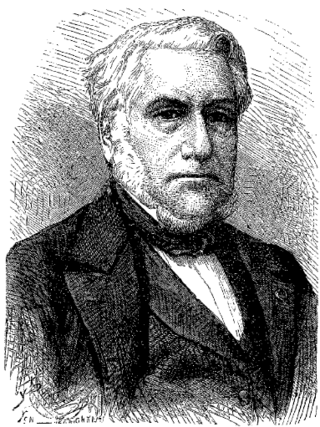
Paulin Talabot was a French railway and canal engineer. Educated at the École Polytechnique, Talabot started his career building canals. Inspired by George and Robert Stephenson's steam railways in England, he built a line to transport coal from the coal mines at La Grand-Combe to the Mediterranean at Nîmes, which opened in 1839. He visited England and became friends with Robert Stephenson, with whom he surveyed a route for a Suez Canal in 1847.
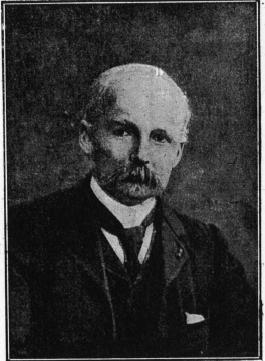
Count Fernand de Saintignon was a French steel maker. He was descended from an old aristocratic family, and became owner of a steel company with operations in Luxembourg and Lorraine by marriage. He was also interested in scientific subjects, and published several papers. He developed a spa around a source of pure, hot water discovered accidentally while exploring for coal deposits.
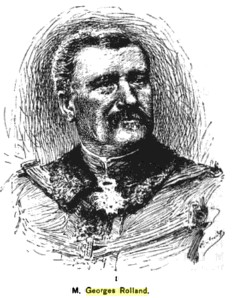
Georges Rolland was a French geologist and industrialist, a member of the Corps des mines, who worked in Algeria in the 1880s. He made important discoveries about the underground hydrology of the Sahara. He was a leading advocate of a trans-Sahara railway to link French colonial possessions in West Africa. After returning to France he explored the geology of the Briey iron ore basin in Lorraine. He married the heiress of a Lorraine steelworks, and became president of the Société métallurgique de Gorcy and the Aciéries de Longwy, and director of various other enterprises.
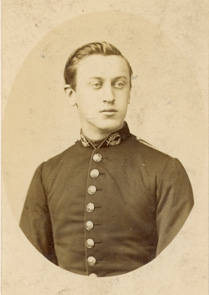
Charles Emile Wickersheimer was a French mining engineer who served as a deputy in the National Assembly from 1885 to 1889, elected on a left-wing platform, and was again a deputy for a brief period in 1893. He became a chief inspector of mines, a member of the public railway network, and was responsible for the Paris quarries.

Stéphane Christophe Mony was a French railway engineer, company president and politician. He was involved in the Saint-Simonian movement when a young man. He was trained as an engineer, and he and his half brother Eugène Flachat built the Paris-Saint Germain and Paris-Versailles railway lines between 1833 and 1840. He was then appointed head of the Commentry mining company, later Commentry-Fourchambault, a position he held until his death. He was elected to the legislature towards the end of the Second French Empire, from 1868 to 1870. He did not succeed in getting reelected in the French Third Republic.

















